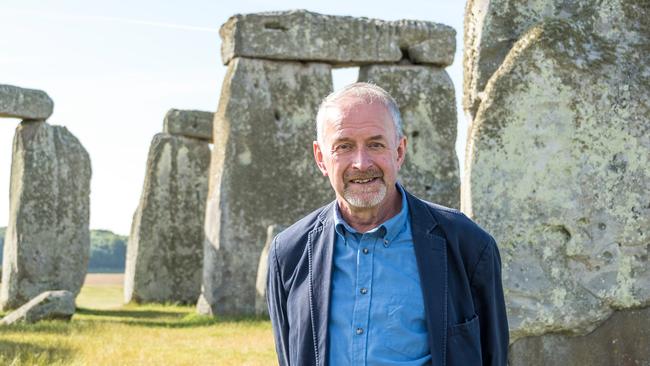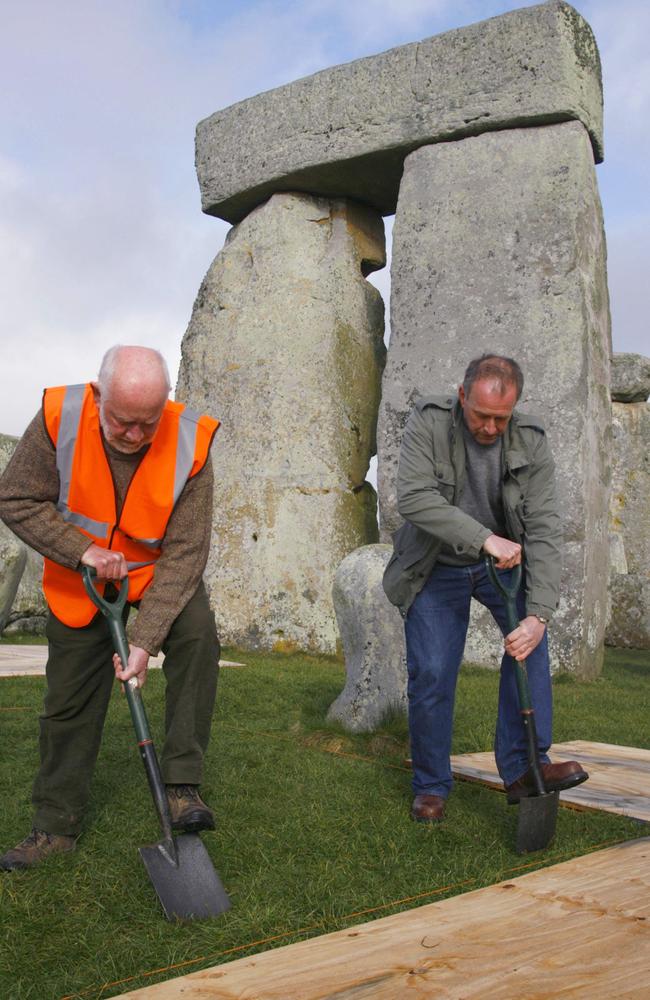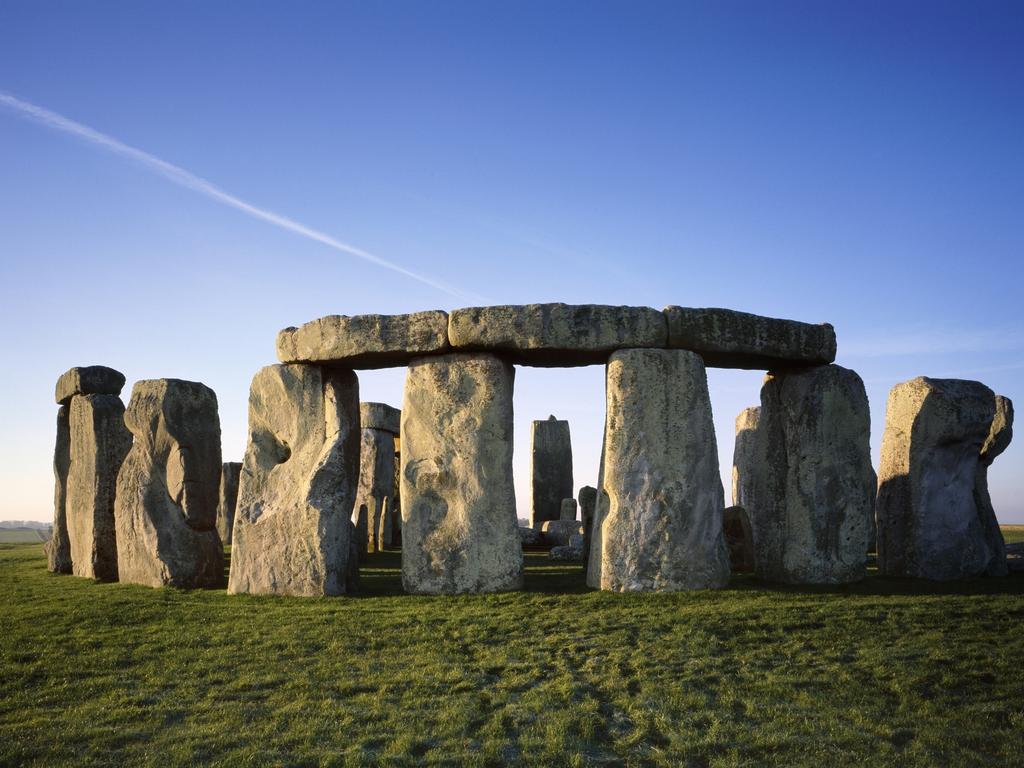Guitarist who studied the rocks that still baffle the world
Archaeologist Tim Darvill led the first excavation of Stonehenge for almost 50 years and divided opinion when he said the site had healing powers.

OBITUARY
That a leading archaeologists played guitar in a rock group called the Standing Stones was fitting, for Tim Darvill had a creative, even anarchic approach to the art of excavation.
This is what he showed when in 2008 he directed, with archaeologist Geoff Wainwright, the first serious excavation of Stonehenge. To try to answer questions that have baffled archaeologists and historians for centuries – why and how the stones were brought 240km to Wiltshire 4500 years ago – they chose first to focus on the site’s smaller bluestones, slabs of volcanic rock that supposedly were carried from a remote stonewall hill fort in Pembrokeshire’s Preseli Hills, where they were said to have healing powers.
Remarkably, the area had never been properly surveyed and for six years the pair dug in the hope that their findings might unlock the enigma that is Stonehenge. The gargantuan nature of the task was not lost on Darvill.
“I think that we really are stepping into the unknown,” he said. “We don’t know what we will find down there because it’s such a long time since anyone had a look.”

Although no conclusive evidence was found that connected the two sites, Darvill and Wainwright were able to date construction of the bluestone circle to about 2300BC and they unearthed materials that supported their theory that the stones were brought because of their perceived healing properties.
Once the Neolithic visitors arrived, they surmised, Stonehenge would have been transformed from a local henge to a “Neolithic Lourdes”. This was also based on growing evidence of illness and injury in human remains under the site, as well as oral traditions that showed people from Pembrokeshire and Wiltshire thought the stones and the surrounding springs capable of healing the sick and the infirm.
At Stonehenge they were given permission to dig a small trench they described as “keyhole surgery”. They found evidence of debris that led them to believe the Sarsen stones (the large ones) had been carved or broken up by trespassers over time.
Though Stonehenge was the most high profile, there was almost no archaeological site in Britain Darvill did not work at, as well as projects in Germany, France, Russia and Malta; he had a particular interest in northwest Europe in the era of the first farmers, between 5000BC and 2000BC, and in the early use of architecture such as stone temples and long barrows.
His dream was to excavate a hitherto undiscovered barrow and he was thrilled when in 2016 a farmer called him and said he thought he had found one on his land at Coneybury Hill in Wiltshire, not far from Stonehenge. Darvill dated the barrow to 3700BC, but what set him apart from other archaeologists was that he looked at “what everybody else shovelled away”, namely the debris surrounding the barrow. Ladling the detritus back on, he realised the long barrow had a “lumpy humpy” profile, not a smooth one, altering our basic understanding of what the ancient structure looked like.
“We can’t even imagine the weird things that happened at long barrows,” he said in an interview in 2020, his soft voice full of wonder. “The weirdness of Neolithic ways of being. They seem quite happy to move people about – partially decaying bodies, body parts … and it may be that people are going off and stealing bits of other people from other long barrows and putting them in their own.”

Darvill had a rich imagination and some archaeologists dismissed his theories as fanciful, particularly when in 2022 he suggested that Stonehenge was a Neolithic calendar and the locals might have used it to keep track of time: the 30 stones represented 30 days of the month, he argued, while the 10 inner stones symbolised the five remaining days each year and the four “station stones” on the outside of the circle represented leap years.
Last year his theory was rebutted by several experts who said the site of Stonehenge was not accurate enough to have served as a solar calendar, though most historians agree that the site was built around the seasons.
He spent much of his youth “digging holes and finding things in the garden” and, aged four, he visited his first long barrow with his father. The 1960s were a fruitful time for archaeology and as a schoolboy Darvill would cycle through the countryside on weekends to join local digs.
At sixth-form college he skipped classes two days a week to excavate with a local archaeological unit working on barrows and, before studying archaeology, was supervising digs of 100 to 150 people (for he was paid £1 a week, which “bought quite sufficient beer”).
The first find that truly thrilled him was discovering a human burial at a Roman site near Andover: “The first time you scrape over the top of a grave and see the bones sticking out is the first connection you have with real people of the past.”
He wrote of Stonehenge that it was easy to forget that these were the remains of “living, breathing, thinking people with their own ideas about the world and the cosmos” and he worked to dispel certain myths about prehistoric people such as that they were dwarf-like, for instance. He liked to examine the bric-a-brac of everyday life and common features of landscape such as railway tracks or fields because such things, he believed, shed light on the psychology of its people.

As well as The Concise Oxford Dictionary of Archaeology, he wrote an archaeological guide to sites in England (2002) such as medieval villages, castles, churches and Roman villas. His books were written with the layman in mind. “If, as Jimi Hendrix once suggested, we could kiss the sky, how would it feel? How would it taste? And what sounds would we hear?” he asked in Dances Beneath a Diamond Sky, his afterword to the book Skyscapes. Such questions might seem irrelevant to a post-Enlightenment audience but were important to ancient societies who, without rational answers, replaced them with cosmologies, myths and beliefs that gave structure to the world (and that most likely influenced sites such as Stonehenge).
As well as curry, which he loved so much that he left money to his university department for excursions to the local curry house, Darvill enjoyed collecting books and playing with the Standing Stones, who headlined several archaeology conferences and university Christmas parties.
He was, one colleague recalled, an entirely different man on stage than in his tweeds in the lecture hall, and his performative streak was put to good use when in 2018 he showed actor Megan Fox around the quarry at Preseli Hills for her documentary Legends of the Lost on the Discovery Channel.
He is survived by Caoimhe Irvine, an Irish archaeologist whom he met at Birmingham University in 2021. They married a week before he died.
THE TIMES





To join the conversation, please log in. Don't have an account? Register
Join the conversation, you are commenting as Logout